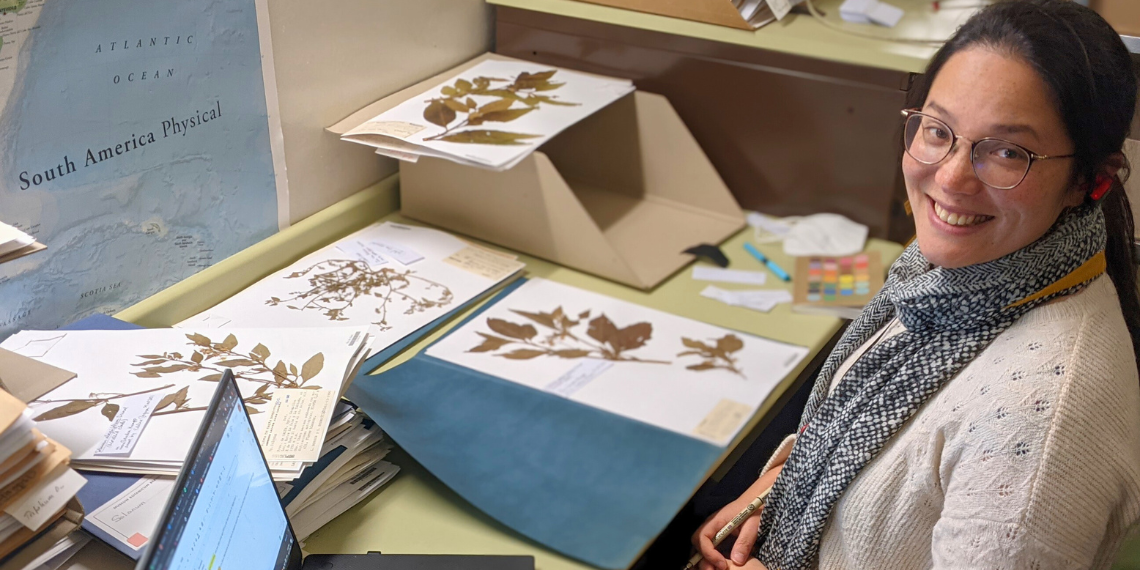When a potato isn’t just a potato: the ‘dirt’ on understanding plant underground storage organs

Have you ever stopped mid-way through a bag of potato chips and wondered, how did a potato become a potato?
Likely not.
But these underground storage organs are exactly what Dr. Edeline Gagnon, a professor of botany who recently joined the Department of Integrative Biology, is interested in understanding.
To understand how the humble potato evolved, Gagnon decided to study how different types of storage organs evolved in the genus Solanum, a large group of plants that includes potatoes, tomatoes, and eggplant, as well as their wild relatives. Specifically, she and her colleagues looked at two different types of underground storage organs: rhizomes and tubers. Rhizomes are stem-like organs that laterally spread underground, and tubers are thick organs that store large amounts of nutrients such as starch.
“People don’t always think about what is going on in the soil with plants. The primary function of these underground organs are to help the plants disperse in their environment and survive under the ground when conditions are unfavourable for plant growth,” explains Gagnon.
She recently published a study in Frontiers in Genetics that found that underground storage organs help plants adapt to distinct environmental extremes, such as wildfires and cold.
More specifically, Gagnon and her co-authors found each type of underground organ was strongly correlated with the type of environment to which the plant species has adapted. Plants with rhizomes tend to be found in the hottest areas and appear to be adapted to fire-driven disturbances. In contrast, plants with tubers, like potatoes, tend to be adapted to prolonged climactic disturbances such as drought and cold unfavourable to growth.
To arrive at this conclusion, Gagnon first had to determine how common these different organs are in the wild species of Solanum, which includes over 1,000 species spread across the world.
“There has been a bias in biodiversity research to structures above-ground. Think flowers, stems, and leaves. People more rarely think to look at or describe in detail underground structures.”
To overcome this challenge without digging up every single species of Solanum, Gagnon relied on the Solanaceae Source Database, which is curated by her co-authors Dr. Tiina Sarkinene and Dr. Sandra Knapp of the Natural History Museum in London, UK. All data included in this database has been fact-checked by plant experts, including confirmation of species identification and location of the plant.
This valuable resource was used in conjunction with an extensive literature review to classify the different types of underground organs for each species. This is not always an easy task, since distinguishing between tubers and rhizomes is not quite as simple as calling a potato, a potato. The task can be even more complicated in plants with both rhizomes and tubers.
Gagnon notes that “nature likes exceptions” and that plants with both types of underground organs tend to be more invasive and supercompetitive with natural flora. So why don’t more plants produce both types of organs if there is a biological advantage? The answer remains a mystery, but future genomic analyses may shed light on the question. Such studies could help further classify these plants and genes related to underground storage organ formation, allowing for a deeper understanding of how these organs evolved and their functionality.
Considering the importance of Solanum species to agriculture around the world, information about their ability to adapt to extreme weather conditions has important implications for the stability of our food sources.
“We hope our research will encourage other researchers to think about how plant diversity looks above ground and below ground,” says Gagnon.
Read the full study in the journal of Frontiers in Genetics
Read about other CBS Research Highlights.